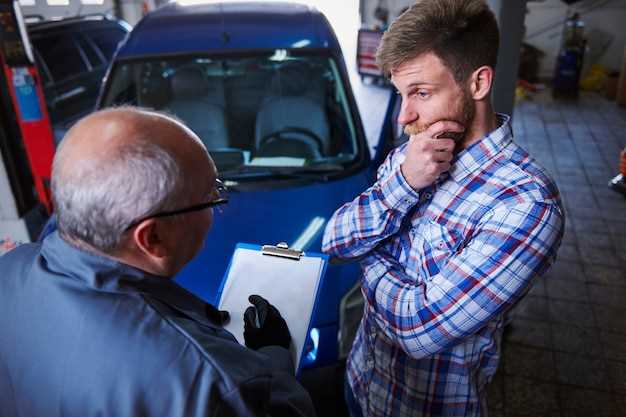
The world of JDM (Japanese Domestic Market) restoration is a niche filled with passion, precision, and a unique blend of engineering and artistry. At HJCG, our expert restoration professionals have gained invaluable insights through years of dedicated craftsmanship and an unwavering commitment to excellence. Their experiences not only elevate the quality of the vehicles we restore but also offer a wealth of knowledge for enthusiasts aspiring to delve into the captivating realm of JDM vehicles.
Restoring a JDM vehicle is more than just a project; it’s a labor of love that requires an expert eye for detail and a deep understanding of the intricacies involved in each model. From sourcing rare components to applying advanced techniques for maintaining authenticity, the expertise of our specialists at HJCG allows us to breathe new life into classic cars while preserving their original spirit. Every restoration tells a story, and our team’s insights can guide those who wish to embark on similar journeys.
This article aims to share the key lessons and tips gathered from our JDM restoration expert, shedding light on the meticulous processes that define our work. Whether you’re a seasoned collector or a novice enthusiast, understanding these insights can enhance your appreciation for JDM culture and equip you with the knowledge to pursue your restoration dreams with confidence.
Key Techniques for Authentic JDM Restoration

Restoring a Japanese Domestic Market (JDM) vehicle to its original condition requires a deep understanding of the model’s specifications and nuances. An expert in JDM restoration focuses on several key techniques to ensure authenticity.
Firstly, sourcing OEM (Original Equipment Manufacturer) parts is crucial. An expert knows that using genuine parts not only enhances the authenticity of the vehicle but also ensures optimal performance. This process involves building relationships with suppliers and utilizing online resources to find rare components.
Secondly, maintaining the vehicle’s original color scheme is vital. An expert in restoration will often utilize paint codes specific to each model and year to replicate the original finish accurately. Matching the paint’s sheen and texture is equally important for achieving a factory-fresh appearance.
Additionally, an expert focuses on meticulous attention to detail during reassembly. Each bolt, clip, and gasket should match factory specifications to ensure the vehicle is indistinguishable from its original state. This aspect of restoration often involves documentation and verification of parts during the restoration process.
Another technique involves preserving the vehicle’s unique features. Whether it’s rare interior fabrics, original wheels, or specific trim pieces, ensuring these elements remain intact or are correctly restored adds significant value and authenticity to the vehicle.
Finally, engaging in thorough research about the model’s history can provide insights into its unique characteristics and quirks. An expert utilizes forums, manufacturer archives, and direct communications with former owners to gather information that could influence restoration choices.
By employing these techniques, an expert can successfully restore a JDM vehicle, preserving its heritage while ensuring it remains true to its roots.
Common Challenges Faced During JDM Projects

The journey of restoring a Japanese Domestic Market (JDM) vehicle is filled with various challenges, even for the most seasoned expert. Understanding these obstacles is crucial for ensuring a successful restoration project.
One of the primary challenges is sourcing authentic parts. Many JDM vehicles were never officially imported to certain regions, making original components scarce and often expensive. Experts must rely on their extensive networks and knowledge of the market to find high-quality replacements without compromising authenticity.
Another significant hurdle is addressing rust and corrosion, particularly in older models. This is not just a cosmetic issue; rust can compromise the structural integrity of a vehicle. Experts utilize specialized techniques and tools to effectively treat and repair affected areas, which often requires meticulous attention to detail.
Electrical systems in JDM vehicles can also pose a challenge, especially when modifications have been made or when parts have degraded over time. An expert must have in-depth knowledge of these systems to troubleshoot issues and integrate modern technologies while maintaining the car’s original functionality.
Cultural differences can complicate restoration efforts as well. Certain modifications popular in Japan may not be well-received in other markets, leading to uncertainty about which direction to take during the restoration process. Experts need to balance local expectations with authenticity, often requiring creative solutions.
Finally, project timelines can stretch indefinitely due to unforeseen complications. Experts must manage client expectations while staying focused on maintaining a high standard of workmanship. Effective project management and communication skills are vital for overcoming such delays.
In conclusion, while JDM restoration projects come with their unique set of challenges, an expert in this field can navigate these difficulties with skill and precision, ultimately delivering exceptional results.
Best Practices for Sourcing Genuine JDM Parts
Sourcing genuine JDM (Japanese Domestic Market) parts can be a daunting task, but with the right strategies, you can ensure you obtain high-quality components for your restoration project. In an interview with a JDM restoration expert at HJCG, several key practices emerged that can streamline the process and enhance the reliability of the parts you acquire.
First and foremost, establish a relationship with reputable suppliers. This might include well-known retailers, online marketplaces specializing in JDM parts, or networks of enthusiasts. Trusted suppliers are more likely to offer authentic products rather than counterfeit items. Make sure to read reviews and seek recommendations from fellow car enthusiasts.
Secondly, utilize online forums and communities dedicated to JDM vehicles. These platforms enable you to connect with experienced restorers who can share valuable insights regarding sourcing parts. Engaging in discussions can help you identify reliable vendors and even uncover rare components that are difficult to find.
Additionally, attend JDM events and car shows. Meeting other enthusiasts in person can provide access to exclusive deals and curated parts that may not be available online. Networking at these events can lead to valuable contacts who have firsthand experience with specific vendors.
When purchasing parts, always insist on documentation proving authenticity. This can include invoices, certifications, or even videos showcasing the part being used in a similar vehicle. Reliable vendors will have no problem providing this information. If a deal seems too good to be true, it probably is, and exercising caution is essential in these situations.
Furthermore, leverage social media platforms where JDM enthusiasts gather. Many groups focus on buying and selling parts, and active members often share their sourcing experiences. Be sure to ask for opinions and advice on specific parts or vendors to enhance your decision-making process.
Finally, be patient and always double-check your findings. The quest for genuine JDM parts may take time, but rushing can lead to poor purchasing decisions. Ensure you conduct thorough research before making any commitments. Staying informed and cautious will ultimately enhance the quality of your restoration project and preserve the integrity of your vehicle.




